Outforia Quicktake: Key Takeaways
- Pine nuts are edible, nutritious, and found in various parts of pine trees, including bark and leaves.
- Stone pine (Pinus pinea) seeds are commonly consumed and contain useful fats, magnesium, protein, iron, and fiber.
- Pine nuts are believed to help maintain heart health, improve brain function, aid weight control, and stabilize blood sugar levels.
- There are stories of people surviving in the wilderness for extended periods by consuming pine nuts.
- Pine needles, pollen, and inner bark can also be eaten, offering various health benefits and nutrients.
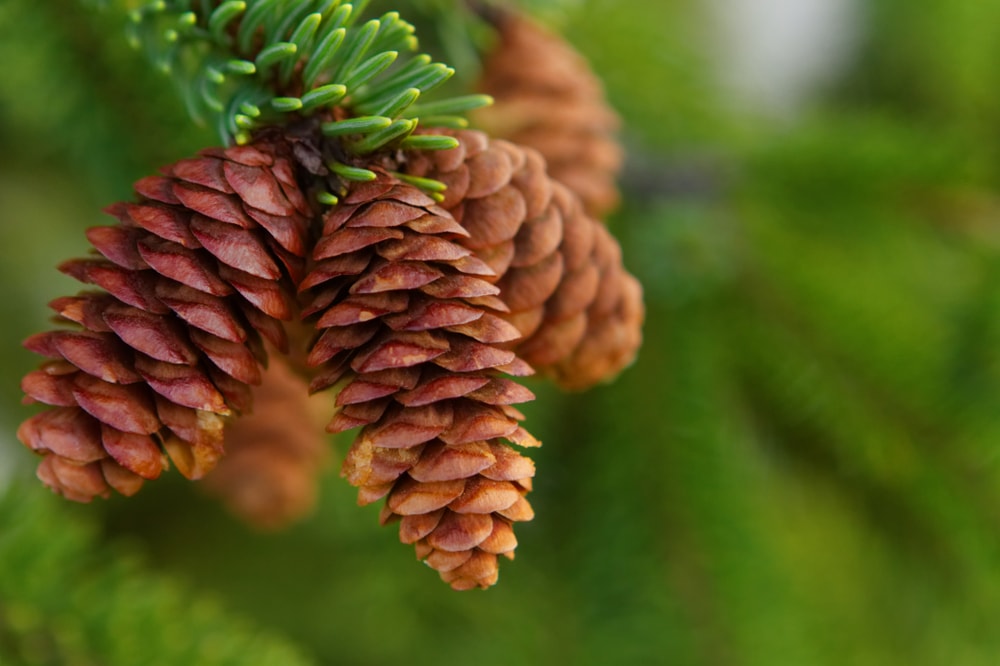
The seeds within pine cones are not only edible, but they are also tasty! You can also eat many other parts of the 121 species of pine tree, including their bark and leaves.
Many trees of the genus Pinus have edible seeds, but some of them are very small. The seeds we buy at the supermarket come from the Stone Pine (Pinus pinea).
This tree comes from the Mediterranean but is also found planted elsewhere. It is an umbrella shape with a long trunk. It has needles that are in pairs and about 20 cm long.
I love the buttery, lemony flavor and the fun of harvesting them!
If you find a Stone Pine, have a good look at its cones and tasty, nutritious seeds! They are the largest pine seeds, so they make the most sense to sell commercially.
Many other types of pine have edible seeds, too.
So What Do Pine Nuts Have in Them That’s Good for Us?
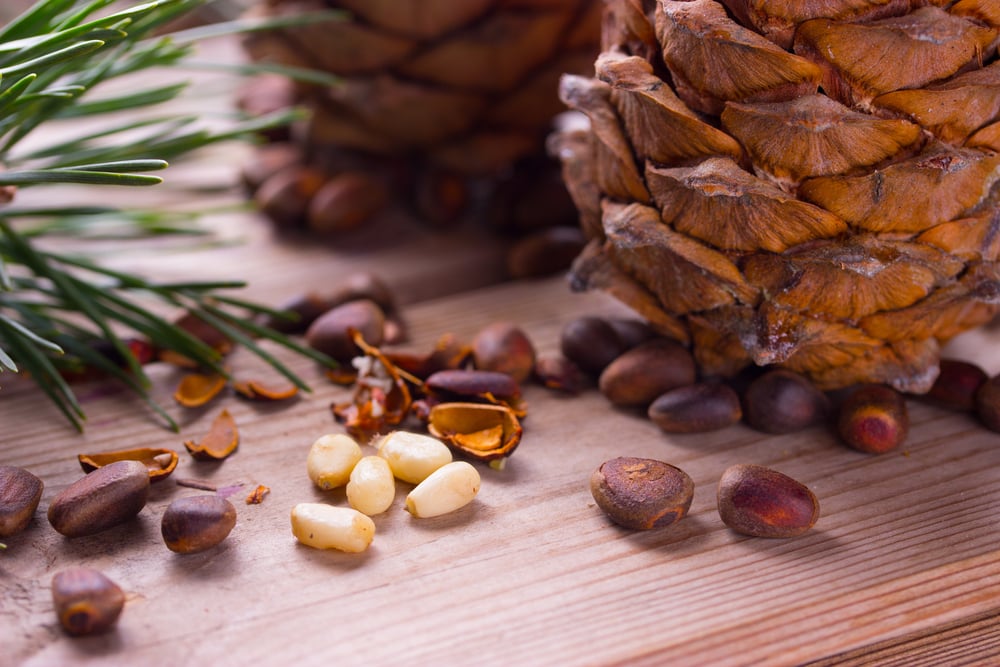
“Pignolia” (another name for stone pine) and Korean pine nuts have high levels of useful fats, magnesium, protein, and iron. Plus, fiber helps your digestion move along smoothly…
By the way, ‘pignolia’ means ‘fussy person’ in Italian!
Pine nuts also contain pinolenic acid, which is thought to help your liver take up bad cholesterol. This helps to prevent heart attacks. So they are great for your heart!
They contain omega 3, which improves your brain function. Annoyingly, the type of omega 3 they have in them is not as easily taken up in your body as other types of omega 3. It still helps, however!
Pine nuts could also help with weight control, as they keep you feeling full.
Lastly, these wonder seeds are said to aid diabetics in keeping their blood sugar levels stable. More research is being carried out to back up these findings.
Could You Survive on Pine Nuts if You Were Hiding Out in the Woods?
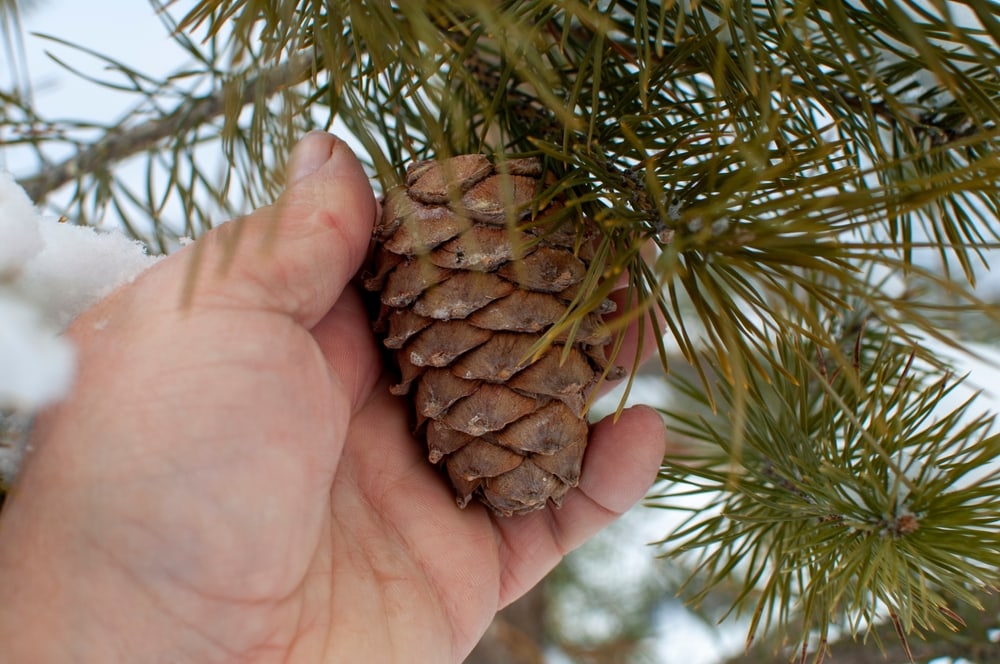
According to stories circulating after World War 2, Japanese soldiers and villagers hiding in the woods did just that.
On my forages, I like to tell a story I heard of a timid Japanese woman who lived on pine nuts for almost two years. She had fled her village, which was being attacked. She finally came out of hiding well after the war was over. She was recorded to be in good health despite her ordeal.
I have to admit there’s no hard proof of the story of this lady, but there are records of Japanese soldiers doing this. One such is Sgt Shoichi Yokoi, who survived in the woods for 28 years on pine nuts. Plus other food like fish and frogs!

ryan Harvey / (CC BY-SA 2.0) / Flickr.com
Sgt Yokoi’s two fellow soldiers died of poisoning in the jungle. Yokoi held out. He made headlines in world newspapers when he finally returned to civilian life.
Just imagine living in the jungle for 28 years!
If you were on the run from zombies/soldiers/space aliens in a future apocalypse scenario, you could do worse than choose pine nuts as survival food. They contain a lot of energy to keep you going, protein to build your muscles and brain, and minerals such as magnesium which aid your nervous system.
Are They Tasty?
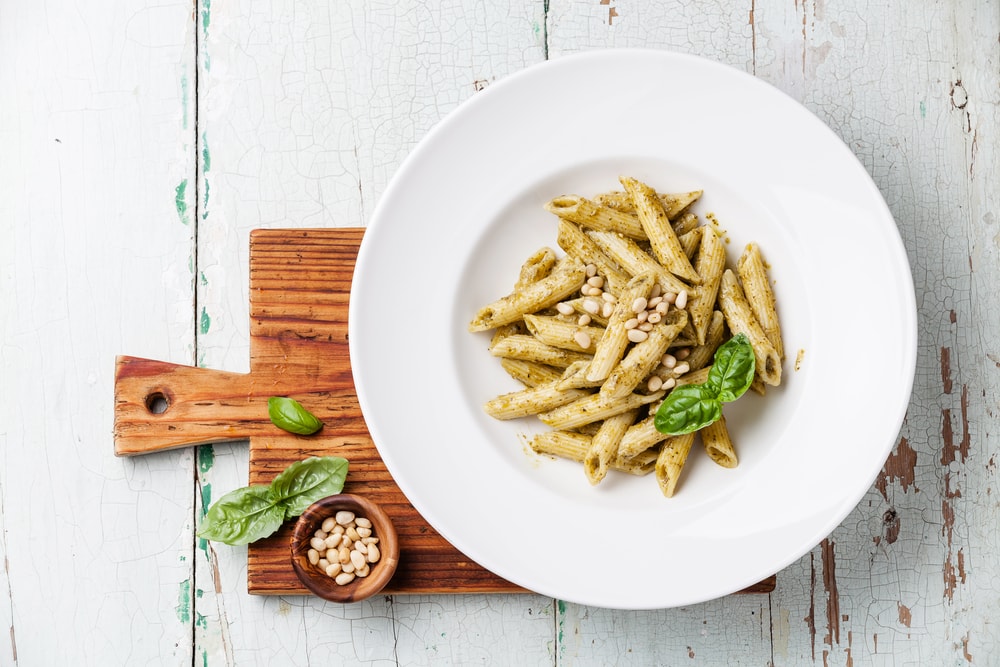
The jury is out on this!
Stone pine nuts are pretty tasty and buttery, with just a slight flavor of pine resin. They taste great sprinkled on salads, yogurts, cakes, and pasta. They can also be ground up with olive oil and made into a pesto (a dip for bread or mixed into pasta).
Yet some unlucky people get “pine nut mouth syndrome” when they eat pine nuts. They get a metallic taste in their mouth that doesn’t go away – for anything up to two weeks! Now that’s weird. How does it happen? Nobody is sure. What we do know is that the symptoms appear 2-3 days after eating pine nuts.
Pine nut mouth has never happened to me. It could be a type of Chinese pine that causes this, or it could be people’s genetic makeup.
Pine nuts from most other species of pine taste nice too, but some have a more resiny taste. It all depends if you enjoy the smell of pine disinfectant!
You may also like: 21 Edible Plants On The Appalachian Trail: Guide To Foraging On The AT
How Do I Recognize a Pine Tree?
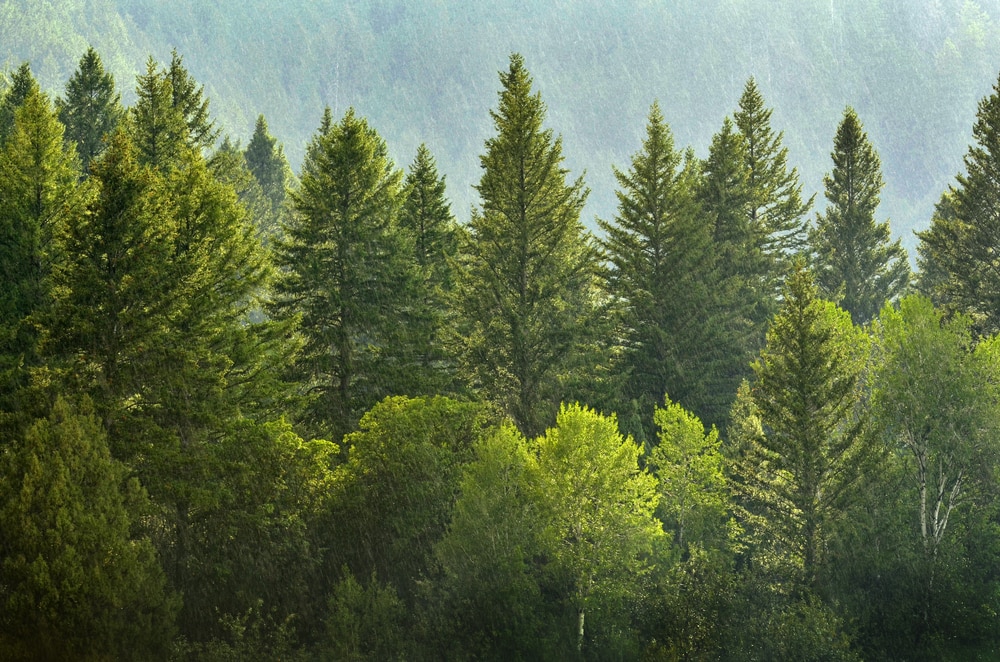
Pine trees have very thin leaves that look like needles. They are evergreen trees, which means they keep their leaves over winter. When you pick off some of the leaves, they come in a little papery sleeve that holds either two, three, or five pine needles.
If you break some of the needles and sniff them, you will be able to smell the lemony pine resin. You can also smell this as the resin leaks out of cut branches.
You can find pine trees in most places, as they are often grown as a fast source of softwood in forestry. They can grow on poor and acid soils.
Pine trees are conifers, which include all trees that bear cones. They come from an ancient branch of the plant family called gymnosperms. These are trees with ‘naked seeds’ that are not within an ovary (this is why they are different from fruit trees).
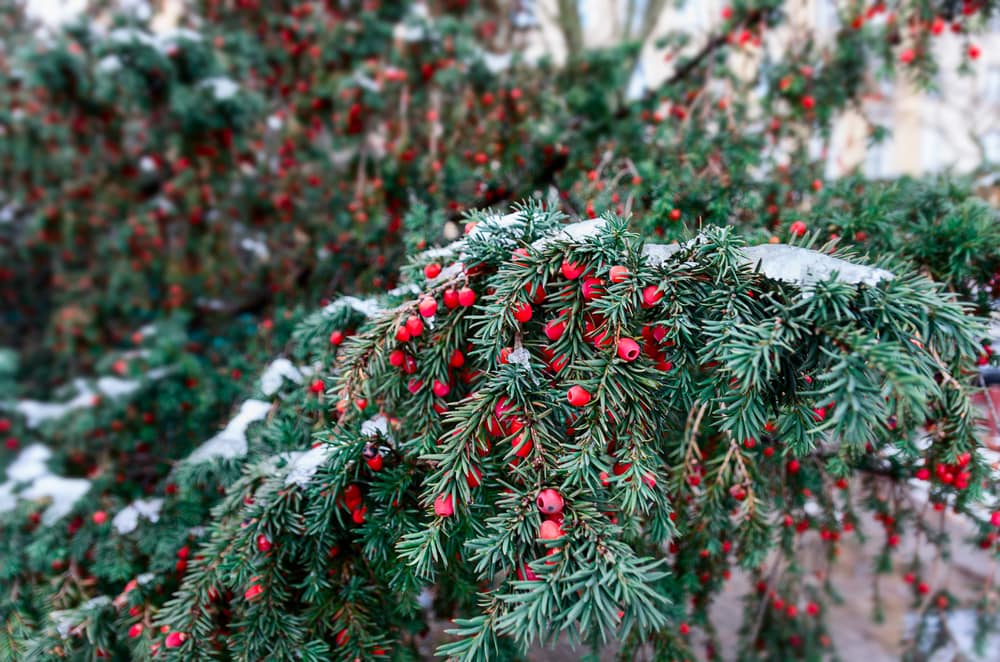
Whatever you do, if you are thinking about eating needles or bark from a pine tree, don’t confuse a pine with a yew tree (Taxus baccata). Yew is lethally poisonous!
Some pine trees have short needles that look like yew needles. Check that there are cones and not fruits. Yew has small red fruits, and the needles are white on the underside.
If in doubt, leave it out…
You may also like: All 47 Types Of Pine Trees From Edible To Flammable: Pictures And Facts
How Do I Harvest Pine Nuts?
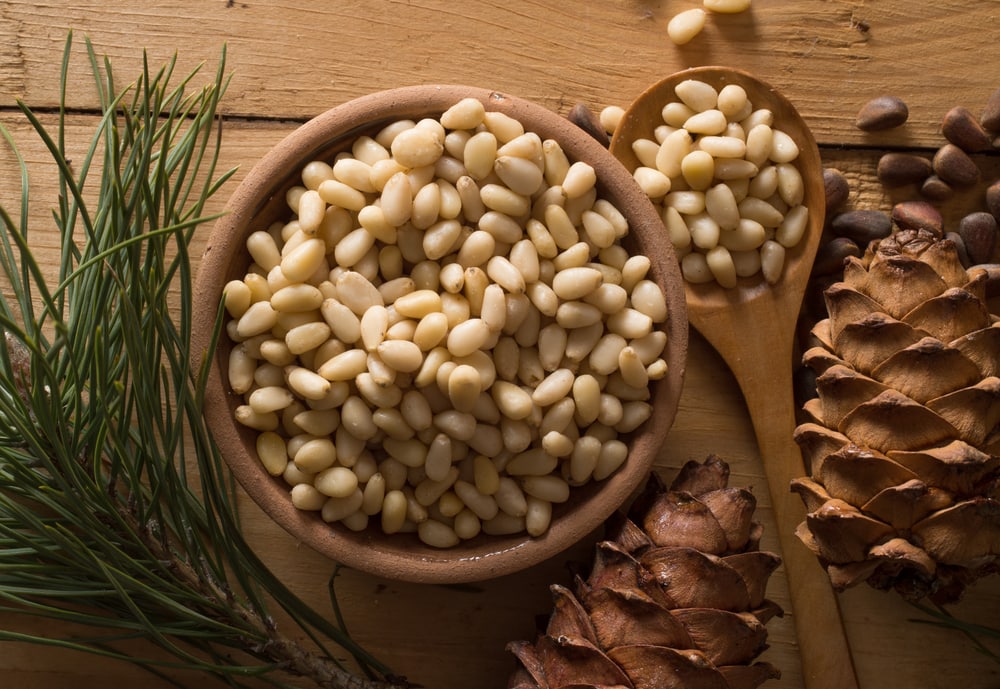
Okay, so you are looking up into the branches of a pine tree, watching the cones tightly welded onto the high branches. How are you going to get at those delicious seeds?
First off, it helps if it is the right time of year.
Pine trees produce male cones in the Spring. Female cones slowly mature over the summer into the autumn. We want the female cones – the woody ones with edible seeds. If it is autumn, the pine cones are more likely to come loose and fall to the ground for you to pick up.
Next, it depends on the weather.
A lot of pine trees react to hot temperatures by opening their cones to drop seeds. This amazing adaptation comes from pine trees living with forest fires in their native land.
Monterey Pines, for example, come from California, where forest fires burn down all the scrub under the pines. This creates a perfect growing space for the baby pine seedlings.
What this means is that pine cones open when heated and close again when cold!
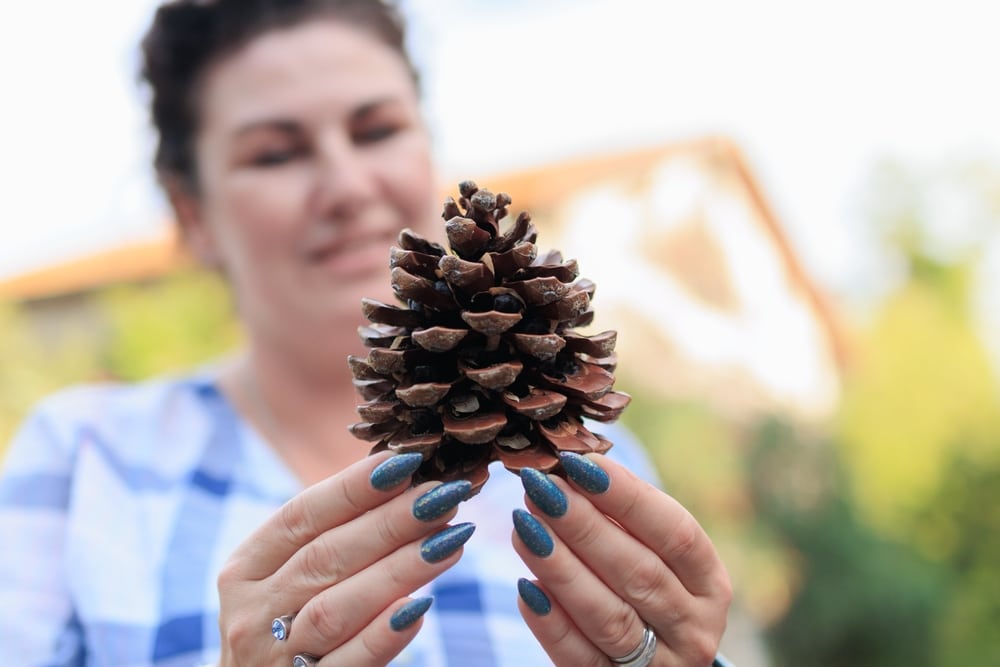
If you would like to try this out at home, there is a fun experiment you can try here.
Watch your local pine trees closely for the cones starting to open. If you leave it too late, the seeds will have fallen out before you can harvest them.
So, you now have some pine cones. They are strong and very difficult to open. This is good for you. It means the seeds haven’t been released yet.
Now the trick is to place your cones on a warm surface. I like to put them in an oven tray on top of my wood stove, but a heatproof tray on a radiator works fine too. In a matter of hours, you will see the cone opening like a wooden flower and seeds dropping out.
The seeds can be very small, so don’t just leave the cones on top of a radiator with nothing underneath them. Unless you enjoy fishing dozens of tiny seeds out of the inside of the radiator, using a toothbrush and colorful language…
(You may think this is obvious, but yes, I have made this mistake! Never again.)
Collect more cones than you think you will need since the seeds are so small. Remove the papery husks from the seeds.
You can also watch this video on how to harvest pine cones.
You may also like: Complete Guide To Different Types Of Leaves With Pictures And Leaf Names
Do I Need to Cook Them?
No, you can eat pine nuts raw without harm. (Unless you are allergic to them!)
However, they will be more sweet and tasty if you toast them. This also makes the resinous taste less strong.
Check out this video and learn how to toast pine nuts.
You may also like: Exploring The 20 Weirdest And Most Amazing Types Of Pine Cones
Can I Eat Anything Else from a Pine Tree?
Yes! Pine trees are a great source of food all year round.
First Nations peoples of America, Scandinavians, and Russians have all traditionally used many parts of the pine tree for food. Pine trees grow all over the world (except for Antarctica), so that means they’re nature’s free larder for most of us.
Pine needles
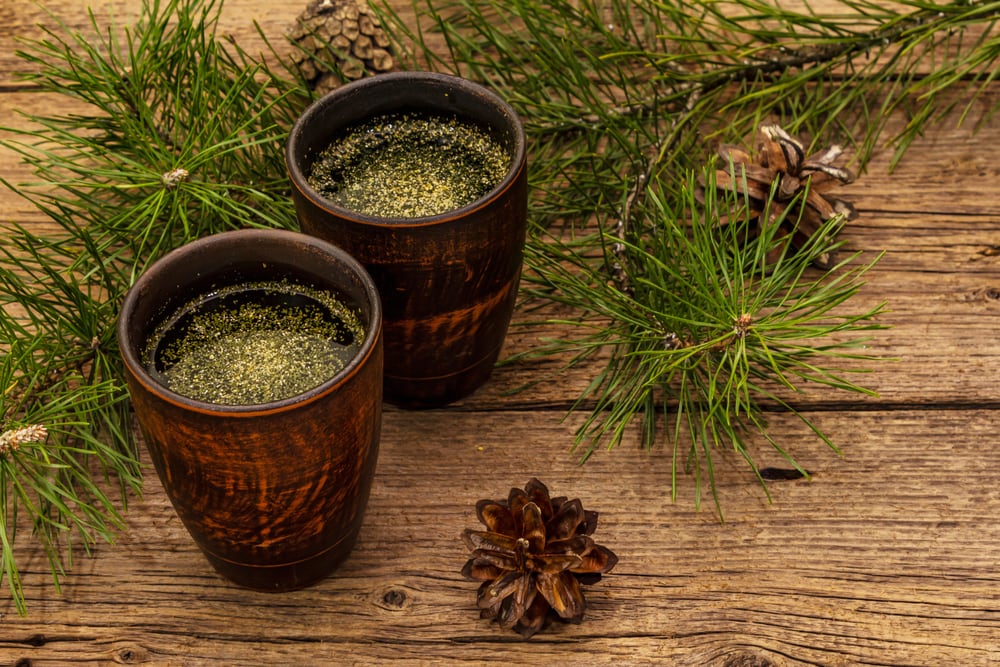
Fresh green needles from the tips of pine branches can be used as a source of Vitamin C. Native peoples have used them for a long time. Fur trappers living in the wilderness In Canada have also done this. For these trappers, who ate a lot of meat and not many vegetables or fruits, pine needles were vital for survival.
To try pine needle tea, simply wait til you see fresh, vibrant green needles. These are softer than the old, darker green needles on a pine tree.
Clip off a small handful and boil them up in a few cups of water for a few minutes until the needles go a softer grey-green color. Strain off the tea and enjoy your Vitamin C boost!
Weight for weight, pine needles contains more Vitamin C than an orange. Now that’s not to be sniffed at…
You can also cut them up and mix them with oil to use as a citrusy marinade for fish or sprinkle them into a salad for a pine flavor. Go easy on the amounts, though – you want a subtle lemony resin flavor, not a mouthful of Dettol!
They can be baked into cookies, infused into vinegar, and used to smoke meat over an open fire. Mmmm!
Pine pollen
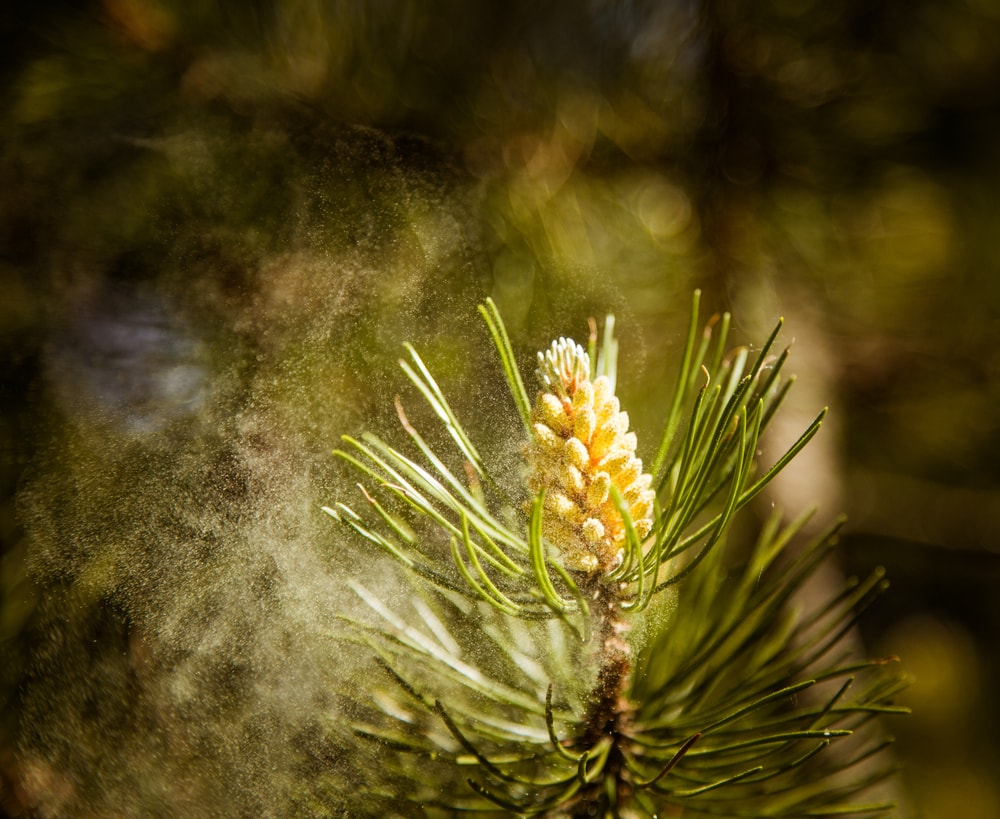
The male cones may not produce seed, but what they do produce in Spring is clouds of fine, bright yellow pollen. The pollen season can be over in just a few days, so be sure to keep watching the trees. The telltale sign is when the small green male cones start to go yellow. Now be quick and harvest it!
Apart from looking fantastic and being fun for children to knock off the tree, this pollen is very nutritious. It is also high in testosterone (a male hormone), so it is great to eat if you are a man who wants to increase his vigor!
(This same quality meant I avoided eating pine pollen when I was pregnant and breastfeeding. Although there isn’t any evidence showing pine pollen harming women this way, I prefer to be careful.)
For those with too little time to forage pine pollen, you can easily buy it online. Many health food companies stock it. Yes, it is quite expensive. That’s because it takes a while to harvest, doesn’t keep for long, and is very seasonal.
It keeps longer when you store it in the fridge or freezer. Or even longer when stored in a vacuum bag. This way, it can last a whole year instead of a week or two in a fridge.
I find the best way to collect it is to gently encircle the male cones within a glass or plastic container. Once they are within the container, give them a good shake. The fine pollen will, with any luck, float down to the bottom of your container. This way, you haven’t even got the hassle of picking out all the spent male cones.
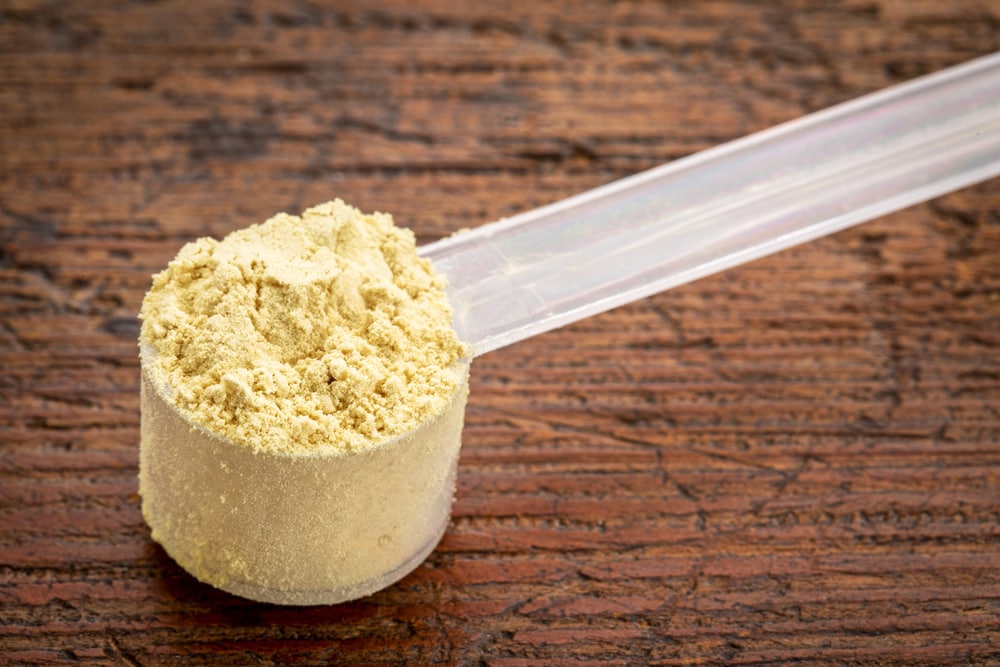
Pine pollen is high in antioxidants. Many studies have been conducted into its benefits, including anti-cancer and anti-aging properties.
Add pine pollen to another flour, such as wheat, to enhance breads, cakes, and pastries. Koreans use pine pollen as an ingredient in colorful cookies called dasik.
Why not try making some dasik? Or use it in a power smoothie to relieve a hangover after a big night out! Or, better still, make pollen fudge!
Do leave enough pollen for the trees to reproduce – that’s what they are trying to do, after all.
Pine Bark
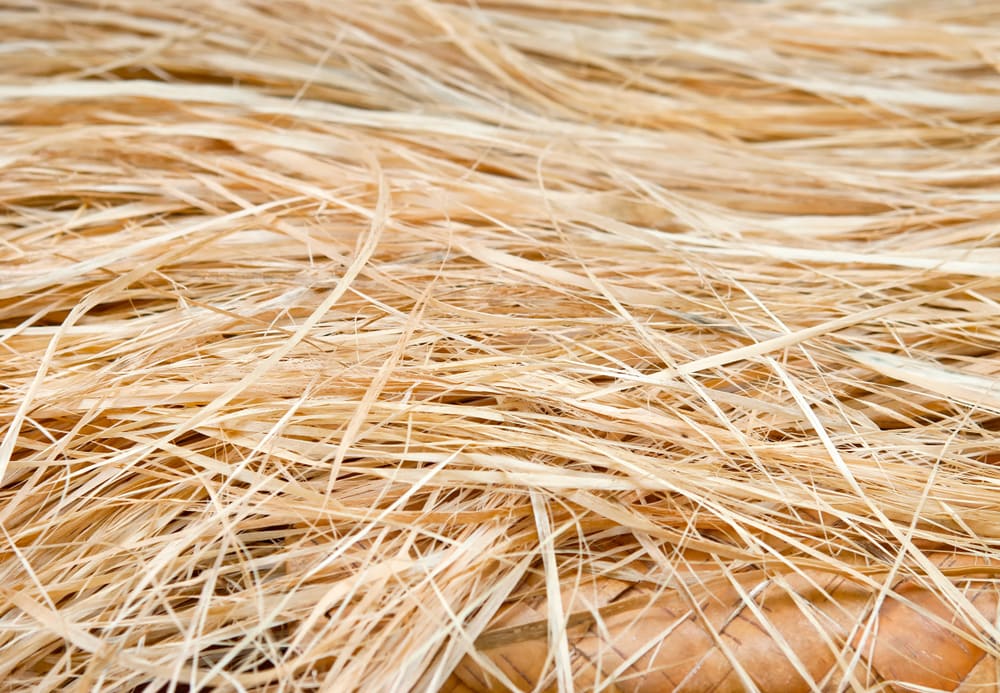
Believe it or not, the inner bark of trees, such as pine and birch, was once commonly used as food by primitive peoples. It was known as a famine food when the main harvest crop failed. This is odd because the inner bark of trees is actually quite good for you!
Pine tree inner bark contains a decent amount of carbohydrates and vitamins. It also gives us procyanidins, catechins, and phenolic acids – these offer us antioxidant, antimicrobial, and anti-inflammatory benefits.
An important thing to remember: we are talking about the inner bark layer (the phloem). NOT about eating the thick, tough, woody bark on the outside of the tree. In case you were wondering!
When harvesting bark from a living tree, be careful not to ring it. This means only taking thin strips of bark from one side of the tree and not from all the way around the trunk. The tree uses its phloem layer to transport nutrients to its branches. If it cannot do this, it will die.
Pine bark was (and still is) dried, powdered then used in breads and cakes in Scandinavia and Finland.
Pettuleipa are a type of Finnish bread made with pine inner bark. They are usually made in a flattish donut shape, which adds to their charm. Finnish schoolchildren make this bread to remember the tough times their ancestors had.
If you want to try this, you can dry the thin strips of cut bark next to a fire, in the oven, or in a dehydrator if you are posh and have enough electricity! They need to be completely dry before you break them into flakes and grind them into flour. Otherwise, the flour will go rotten. You have been warned!
You may also like: How To Identify Mushrooms: A Guide To Building The Skill For The Field
Pine Cones FAQs
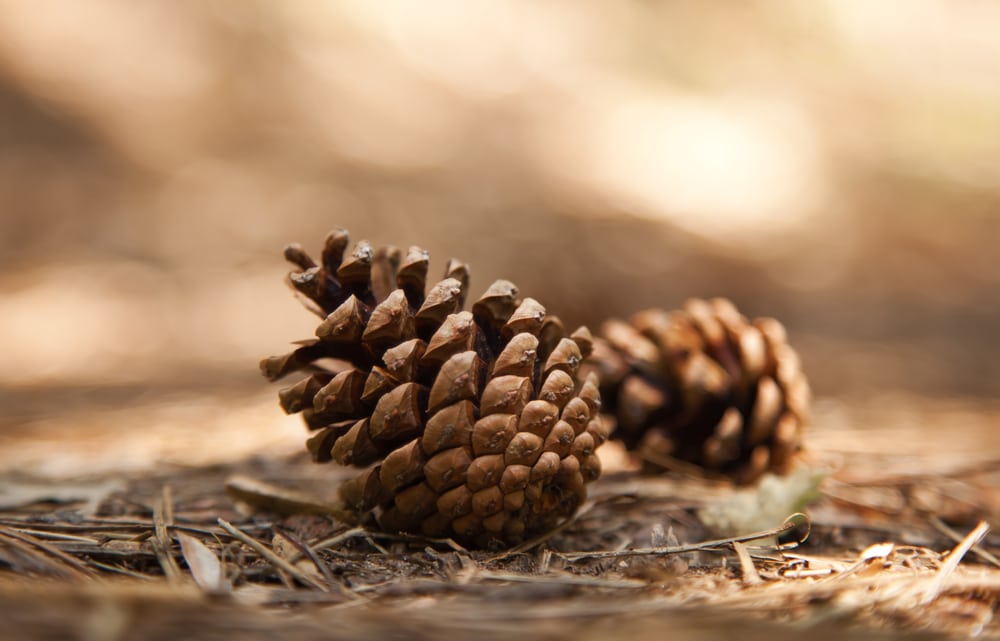
Which pines are poisonous?
The Ponderosa Pine (Pinus ponderosa Lawson/C.Lawson) has a chemical in it called isocupressic acid. This causes kidney failure and paralysis in cattle and sheep. It also causes pregnant animals to abort.
Another conifer, the ‘Norfolk Island Pine’ (Araucaria heterophylla), is not actually a true pine. It is in the Araucaria family (which includes the edible Monkey Puzzle tree).
The Norfolk Island Pine is poisonous to cats and dogs, causing vomiting and depression. So personally, I’d avoid eating that one too! Yew is not a pine, but it looks enough like one to get a mention here. Yew contains taxin, which can easily kill you.
Are pine cones toxic to humans?
No. However, you may be one of those people who are allergic to certain nuts or seeds. With any wild food that you haven’t tried, be cautious. Eat only a small amount to start with.
Can I use pine cones for anything else apart from food?
Pine cones can be used as tinder to start fires. Their large surface area is perfect for getting a fire crackling beautifully.
They are great homes for insects if you enjoy making bug houses! You can also place them in garden plant pots to deter pests – a bit like natural barbed wire.
Can I grow my own Stone Pine trees?
As long as you live in a temperate climate zone, you can plant Stone Pine seeds. They are hardy to -15C. You will get more nuts if your climate is warm, like the Mediterranean. Be prepared to wait 10-15 years for the crop!
What do pine cones symbolize?
The pattern of pine cone scales follows the Fibonacci sequence, which is a concept in math that conveys great beauty in living things.
The Aztec goddess of fertility carried pine cones in her hands. The Egyptian god Osiris, the Greek god Dionysus and the modern-day Pope all carry a staff adorned with a pine cone.
Ancient Assyrian palace reliefs show hawk-headed beasts carrying a pine cone – a symbol of immortality.








